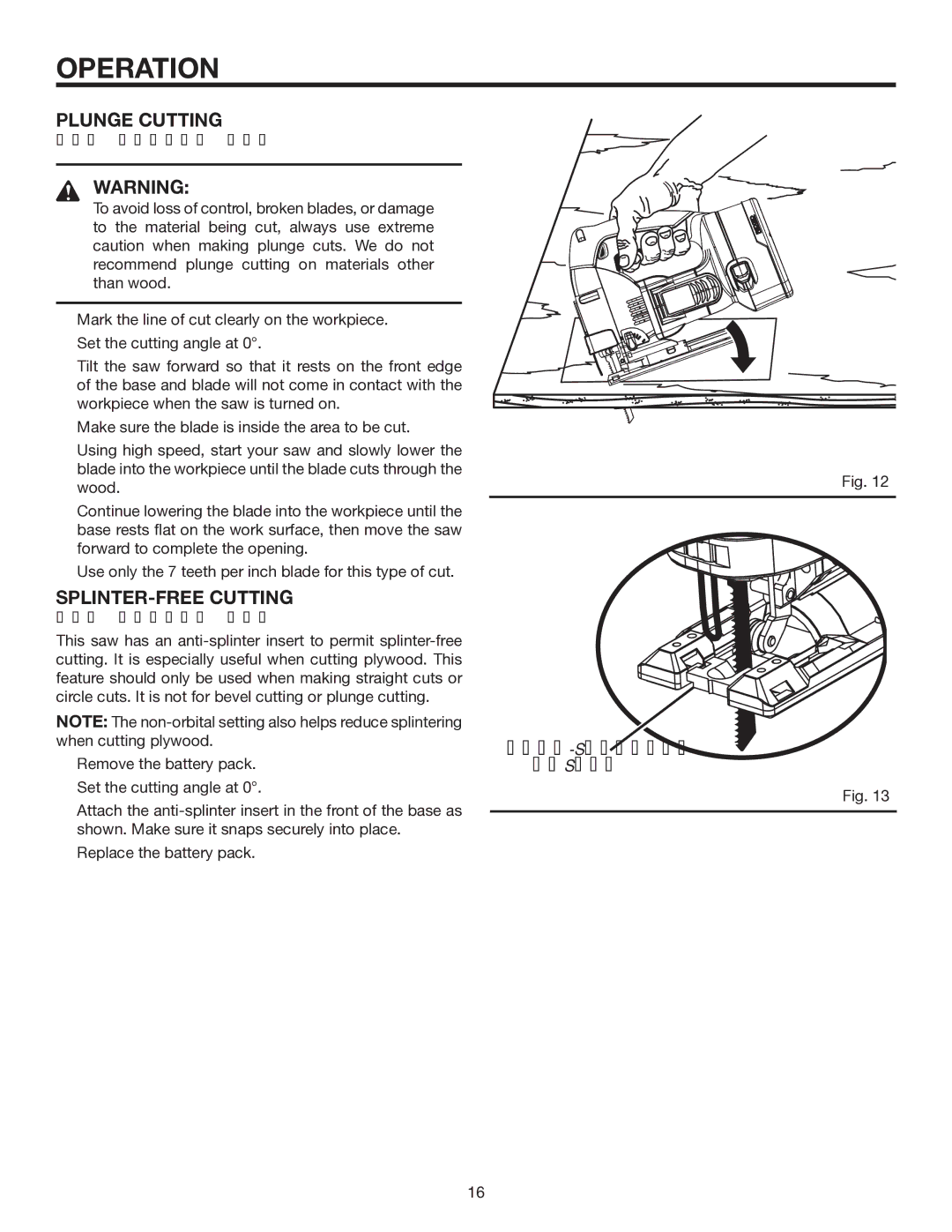
OPERATION
PLUNGE CUTTING
See Figure 12.
WARNING:
To avoid loss of control, broken blades, or damage to the material being cut, always use extreme caution when making plunge cuts. We do not recommend plunge cutting on materials other than wood.
nMark the line of cut clearly on the workpiece.
nSet the cutting angle at 0°.
nTilt the saw forward so that it rests on the front edge of the base and blade will not come in contact with the workpiece when the saw is turned on.
nMake sure the blade is inside the area to be cut.
nUsing high speed, start your saw and slowly lower the blade into the workpiece until the blade cuts through the wood.
nContinue lowering the blade into the workpiece until the base rests flat on the work surface, then move the saw forward to complete the opening.
nUse only the 7 teeth per inch blade for this type of cut.
SPLINTER-FREE CUTTING
See Figure 13.
This saw has an
NOTE: The
nRemove the battery pack.
nSet the cutting angle at 0°.
nAttach the
nReplace the battery pack.
ANTI-SPLINTER
INSERT
Fig. 12
Fig. 13
16
